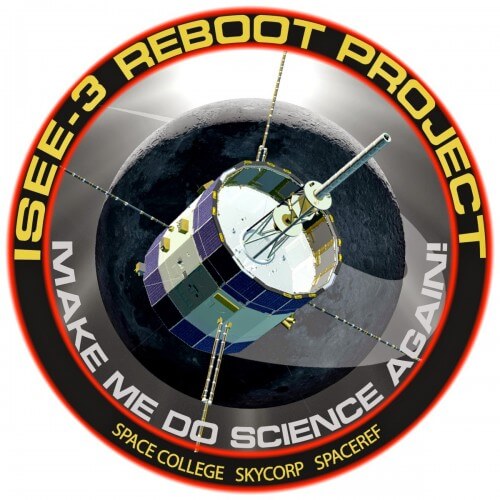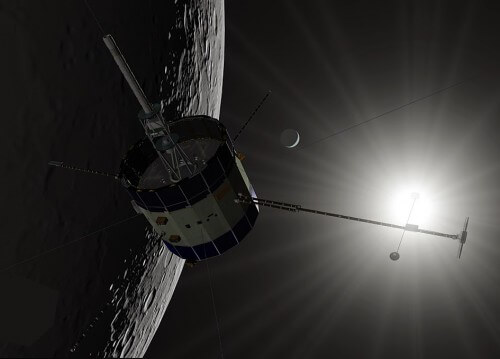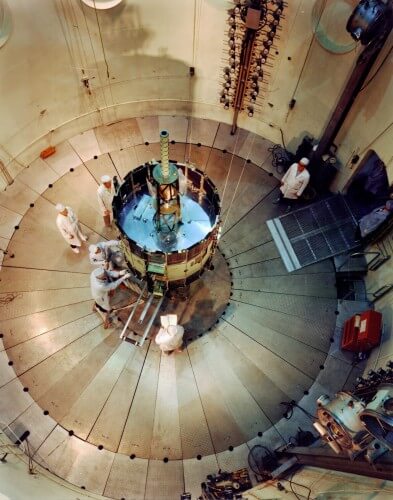The pioneer spacecraft ISEE-3 (ISEE-XNUMX), which went on a journey decades ago as a solar explorer, continued as a comet hunter, and today it is drifting back to Earth. Purposeless, she falls into the abyss, waiting for a last rescue effort that may come from an unexpected source.

Hello children, let me tell you a story of bravery and resourcefulness, courage and endless determination. A journey of adventure to distant lands, to terrible loneliness and dangers out of this world.
This is the story of the pioneer spacecraft ISEE-3, which set off on a journey decades ago as a solar explorer, continued as a comet hunter, and today it is drifting back to Earth. Purposeless, she falls into the abyss, waiting for a last rescue effort that may come from an unexpected source.
Our story begins in the late seventies of the last century. In these years the space age created precedents one after another; Two large space stations orbited the Earth, two robots explored the surface of Mars, other robots landed on the surface of Venus, and the first two spacecraft to explore the gas giants were launched.
The study of the sun's effect on the earth's environment and the relationship between the magnetic fields of the two was also in its infancy.
The ISEE program was a collaboration between NASA and the European Space Agency to study the Earth's magnetic field and the changes it undergoes as a result of solar activity. This project started the solar activity monitoring program that exists to this day. Two spacecraft called IC-1 and 2 were launched in 1977 into orbit around the Earth with instruments for measuring magnetic fields.

IC-3 was launched in 1978 at a distance of one million kilometers from the Earth, to the point of equilibrium between the gravitational forces of the Earth and the Sun. At this point it is always between the sun and the earth. IC-3 was the first to be placed in a halo orbit around this point.
For several years the spacecraft collected data on the magnetic field, plasma particles and cosmic radiation, and in 1982 it completed its planned mission.
At the same time, a proposal was made to use the same spacecraft to make a pass through a comet's tail, since the structure of comets' tails is formed by the solar winds.
The spacecraft's name was updated to "ICE" (ICE, International Comet Patrol). It was diverted from the equilibrium point and flew in a tortuous orbit around the moon and up the solar system until the planned encounter with a comet named Giacobini-Ziner, which passed through its tail in September 1985.
Another opportunity to study comets appeared further down the road and in March 1986, the spacecraft passed through the tail of Halley's Comet, 28 million kilometers from our orbits (a comet's tail is a big m-m-s thing).
As I already mentioned inPrevious records, space is not a simple place for machines, and exposure to radiation is a danger to electronic systems, especially when they are operating. So, when Ace's mission is over, turn off her systems until you find her a new mission. The spacecraft remained in orbit around the Sun, an orbit that would return it to Earth many years later, in the summer of 2014.
During the 90s, Ace was operated to measure solar activity, and in 1997 it was finally turned off and declared a completed mission.

ICE-3, or ICE, remains in orbit around the sun when it is effectively turned off, except for a transmission beacon that makes it possible to verify its position if necessary.
In 2008, NASA used its Deep Space Network (DSN) to identify Ace and precisely calculate its trajectory.
The spacecraft was found to be operational and most of its instruments are in working order.
The options before NASA were to return the spacecraft to Earth's orbit and end its operation, to ignore it and lose it in interplanetary space, or to activate it again and extract more scientific data from it.
At the end of the 90s, the work of updating the hardware of the deep space network was done, during which the electronic systems that made it possible to control this spacecraft remotely were disassembled. This fact made NASA's decision very simple. The agency struggles every year for the operating budget of much newer and more sophisticated missions such as Cassini on Saturn, Messenger on Hama, Opportunity on Mars, so reactivating an ancient spacecraft that almost no one remembers how to operate sounds unnecessary.
NASA engineers at the Goddard Center examined the possibilities in early 2014 and concluded that the effort was not worthwhile.
And then a wonderful thing happened!

Space enthusiasts in the US and the rest of the world protested the decision to ignore IC-3. After all, deep space missions are a rare and expensive commodity, and this one is not equipped with modern equipment, but it works and has fuel left in it! Ignoring her sounds unfathomable.
The educational association Space College, together with the technology company SpaceCorp They decided to take matters into their own hands and solve the communication problem themselves. The AC-3 reboot project has been established!
They received NASA's permission to dig into the archives and find the spacecraft's lost data, and learn how to operate it. They also started collecting and lending the required electronic equipment.
Time is short. There are only a few months left until the spacecraft gets close to Earth, but in order to put it into orbit around it, it needs to start braking its speed before June 20. The sooner the braking maneuver is performed, the more fuel will remain in the spacecraft to continue its mission.
To cover the expenses, a crowdfunding campaign was established to raise $125,000, and at the end Close to $160,000 was raised. This fact alone guarantees that it will be possible to establish communication with the lost spacecraft.
Software and procedures were written and tested, the electronic equipment was built and installed. Currently, the project people are in the largest radio telescope complex in the world in Arecibo. The hardware has been installed and they are ready to transmit to the spacecraft as soon as airtime becomes available for them.
Meanwhile, the spacecraft's position and speed were remeasured, and its trajectory was calculated. It seems that if not activated, it might even crash on the moon.
NASA, for its part, signed an agreement with the initiating organizations authorizing them to "take over" the spacecraft, which is still government property. After they manage to activate it, it will probably be returned to orbit around the Earth, and perhaps sent later on another journey of several years to another comet. It will also be the first spacecraft in deep space that is under the control of a private entity, another achievement to the long list of achievements of IC-3.
You are welcome to follow the initiative with meפייסבוק, BTwitter וOn the association's website who initiated this wonderful challenge.
I will add significant updates here later.
Good luck!
[Update 29/5: A two-way relationship is established with the spacecraft using the antenna in Arecibo. In the coming days, an inspection and assessment of the spacecraft's health will be carried out in preparation for the activation of its engines.]\

2 תגובות
Bring bring a spacecraft to Earth very interesting
Successfully!